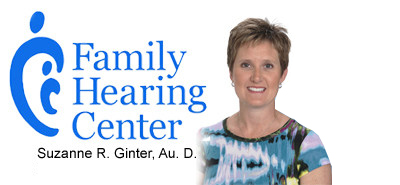Types of Hearing Loss
Results of the Hearing Evaluation are plotted on a chart called an audiogram.
Hearing loss is measured in decibels (not percentages) and is described in the following general categories:
- Normal hearing - 0 to 20 dB HL
- Mild hearing loss - 26 to 40 dB HL
- Moderate hearing loss - 41 to 55dB HL
- Moderately-severe hearing loss - 56 to 70 dB HL
- Severe hearing loss - 71 to 90 dB HL
- Profound hearing loss - greater than 91 dB HL
It is often difficult for friends or family members of loved ones with hearing loss to understand exactly what they are hearing but also what they are missing. Conversations are difficult to understand when many of the sounds are not being heard or understood. The follow is an example:
Severity of Hearing Loss:
Normal hearing loss
Mild hearing loss
Moderate hearing loss
Severe to profound hearing loss
Effects of Spoken Words
"Freddie thought he should find a whistle."
"Freddie thought--e -ould-ind a whi--le."
"-reddie -ough--e -ould -i--a -i-le."
LOUDmumble soft soft LOUD soft LOUDsoft
Hearing loss affects the entire family. We do a great deal of counseling in order to help everyone involved have a better understanding of the hearing loss and realistic expectations we can strive for. Those of us with normal hearing generally take for granted the ease with which we communicate. We may miss some words due to lack of attention or background noise, but for the most part we can effortlessly switch between different environments and modes of communication (i.e. cell phone, listening to television) without much thought.
This is not the case for those with hearing loss. Crowded rooms overwhelm speech and telephones and televisions are a challenge. Hearing impaired patients find themselves withdrawing from these difficult listening environments which then negatively effects their quality of life. With the ever-changing advancements in hearing aid technology we can improve quality of life through better hearing.
Types of Hearing Loss:
Conductive hearing loss occurs when sound is not conducted efficiently through the ear canal, eardrum or tiny bones of the middle ear, resulting in a reduction of the loudness of sound that is heard. Conductive losses may results from earwax blocking the ear canal, fluid in the middle ear, middle ear infection, obstructions in the ear canal, perforations in the eardrum membrane, or disease of any of the three middle ear bones. All conductive hearing losses should be evaluated by an audiologist and a physician to explore medical and surgical options.
Sensorineural hearing loss is the most common type of hearing loss. More than 90% of hearing aid users have sensorineural hearing loss. The most common causes of sensorineural hearing loss are age related changes and noise exposure. A sensorineural hearing loss may also result from disturbance of inner ear circulation, increased inner fluid pressure or from disturbances of nerve transmission. An audiologist can best prescribe options for improving sensorineural hearing loss.
